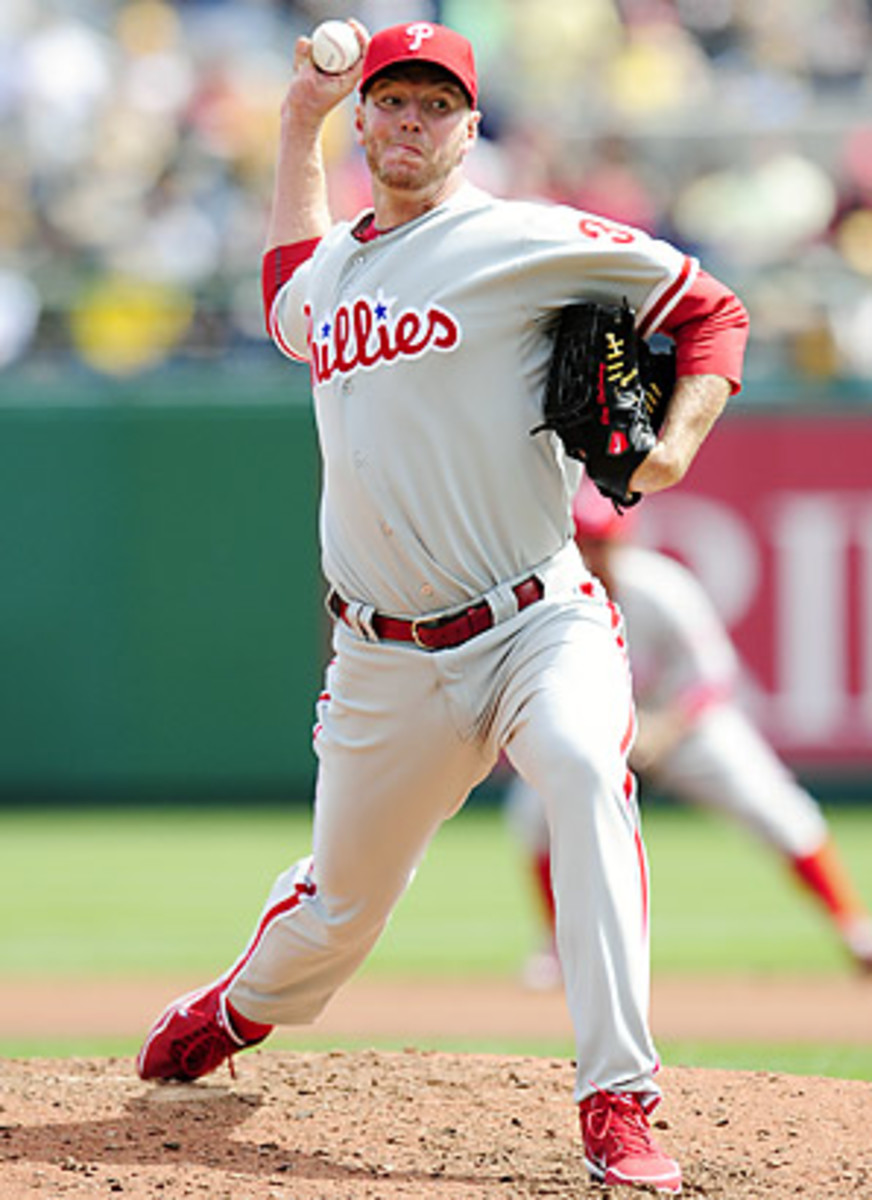Pitch counts become strategy upon which all teams seem to agree
It took one day to remind us that nothing in baseball, not even Bud Selig, is more powerful than the almighty pitch count.
Roy Halladay, Johnny Cueto, Justin Verlander and Ryan Dempster all had allowed no runs as Opening Day starting pitchers Thursday while throwing no more than 108 pitches when their managers yanked them from the games. Only half of them earned wins.
Ten years ago, in 2002, Randy Johnson, Freddy Garcia and Livan Hernandez all threw at least 115 pitches on Opening Day. In a full decade of Opening Days since then, it's happened only once: Curt Schilling threw 117 pitches for Boston Way back on Opening Day '06.
How is it possible that in 10 years all 30 teams agree on the same one-size-fits-all philosophy when it comes to pitching? How could Johnson, Garcia and Hernandez -- all of whom compiled prolific careers -- do in one day what the entire industry could not do in the subsequent decade? And how could every organization agree on the same philosophy while pitchers do not remain healthier and leads are not better protected under this bowing down to the pitch count? What does it say about advances in nutrition, biomechanics, medicine and other sciences that pitchers have become less productive?
Part of the answer falls to the money and prestige clubs use to cater to their closers. Detroit is paying Jose Valverde $7 million to be a closer. His usage is nearly entirely predicated on an arbitrary statistic, the save. So Verlander gets pulled to justify the investment and to pamper the closer. The pitch count also is used as an insurance policy against charges of misusing a pitcher when and if he breaks down. This passive approach can be directly tied to the industry-changing injuries to Kerry Wood and Mark Prior after their breakout '03 seasons.
I'm not advocating that pitchers be left out there to wither. I am questioning the illogic of how every pitcher could be treated the same way by every organization.
If Halladay finishes Opening Day with a complete game and 115 pitches instead of 92, will Charlie Manuel be blamed if he breaks down later? Is Jonathan Papelbon angry if he doesn't get the ball in the ninth inning? Is the Philadelphia front office, which is paying Papelbon $11 million this year, upset if Manuel doesn't give him a ninth-inning save chance?
Groupthink has overrun modern usage of pitchers. Here is one more look at how quickly and universally the game has changed in a decade: consider how often pitchers have thrown 115 pitches on Opening Day by increments of a decade:
They gave up nothing. Verlander, Halladay, Clayton Kershaw and Johan Santana combined to throw 24 shutout innings while giving up just eight hits and four walks while striking out 20.
Combine those numbers with those of Felix Hernandez and Bartolo Colon, former Cy winners who pitched in Japan last week for Seattle and Oakland, respectively, and you get a 2012 Cy-line of 2-0 with a 0.45 ERA over 40 innings (with twice as many strikeouts, 32, as hits allowed, 16).
The six Cys represent half the number of pitchers on Opening Day rosters with a Cy on the wall. The other six are under the gun to keep up appearances: CC Sabathia and Tim Lincecum Friday, Zack Greinke, Cliff Lee and Jake Peavy Saturday, and Barry Zito on Monday.
The Marlins new home plays huge from gap to gap.
Yes, I know, it's only one game. It's the ultimate small sample. We still don't know how the ball will carry through the heat of summer and in different combinations of whether the roof and outfield panels are closed or not (though the roof is likely to be open no more than about a dozen times this year, according to a Marlins formula taking temperature and humidity into account.) It takes about three years to get an accurate fix on how a park plays. But sometimes a park is so big you can tell at first blush that pitchers have an enormous bailout area in which to work: Safeco, Petco, Citi, etc.
In the '90s, steroids and the boom in cozy, retro ballparks helped ignite an explosion in offense. But now steroid testing and the construction of pitcher-friendly parks have contributed the biggest downturn in offense in 20 years. According to ESPN.com's Park Factor, only 10 parks last year played favorably to hitters, while 20 played favorably to pitchers.
Marlins Park appears to continue a nine-year trend in which most new ballparks favor pitchers. Take a look at this: the seven newest ballparks, all of which opened since '04 (the first season of steroid testing with penalties), and how they rank among the most favorable pitchers' parks in '11 as determined by effect on runs:
Among the 10 parks that favored hitters in '11, seven of them were among the 10 that opened between 1994-2003 (Texas, Colorado, Arizona, Houston, Cincinnati, Detroit and Milwaukee).






